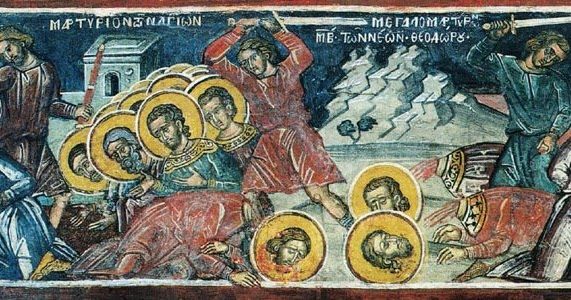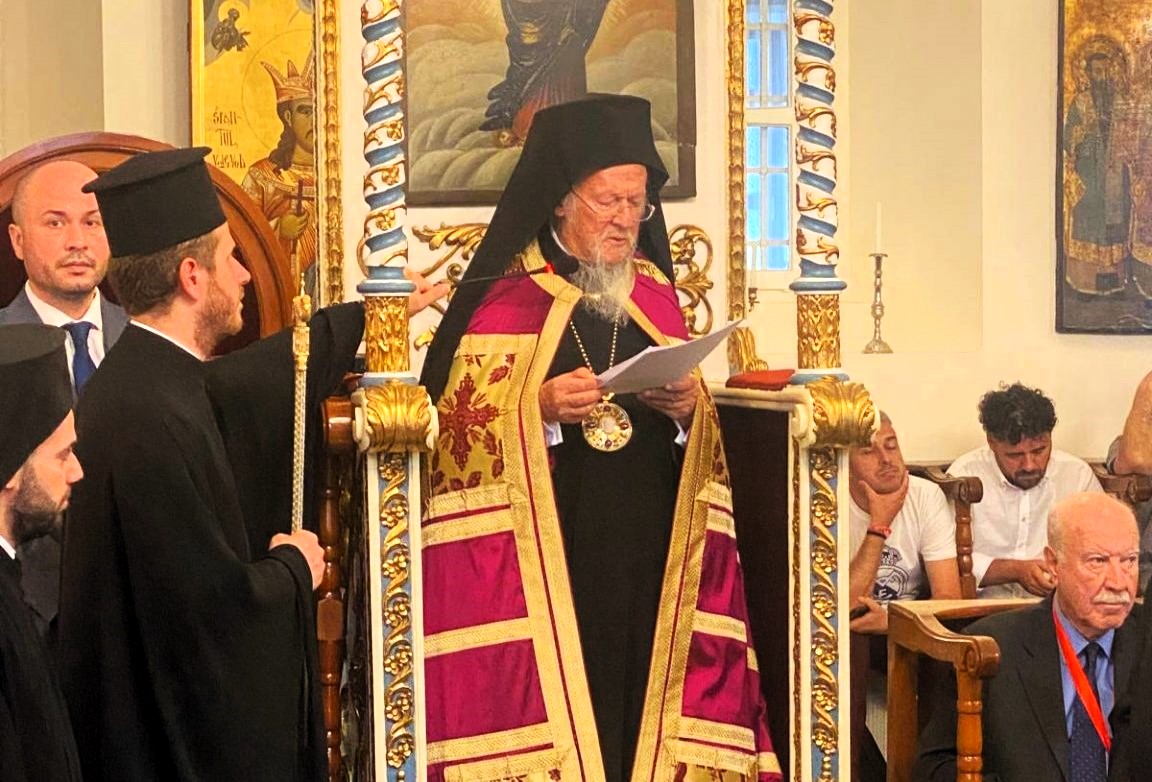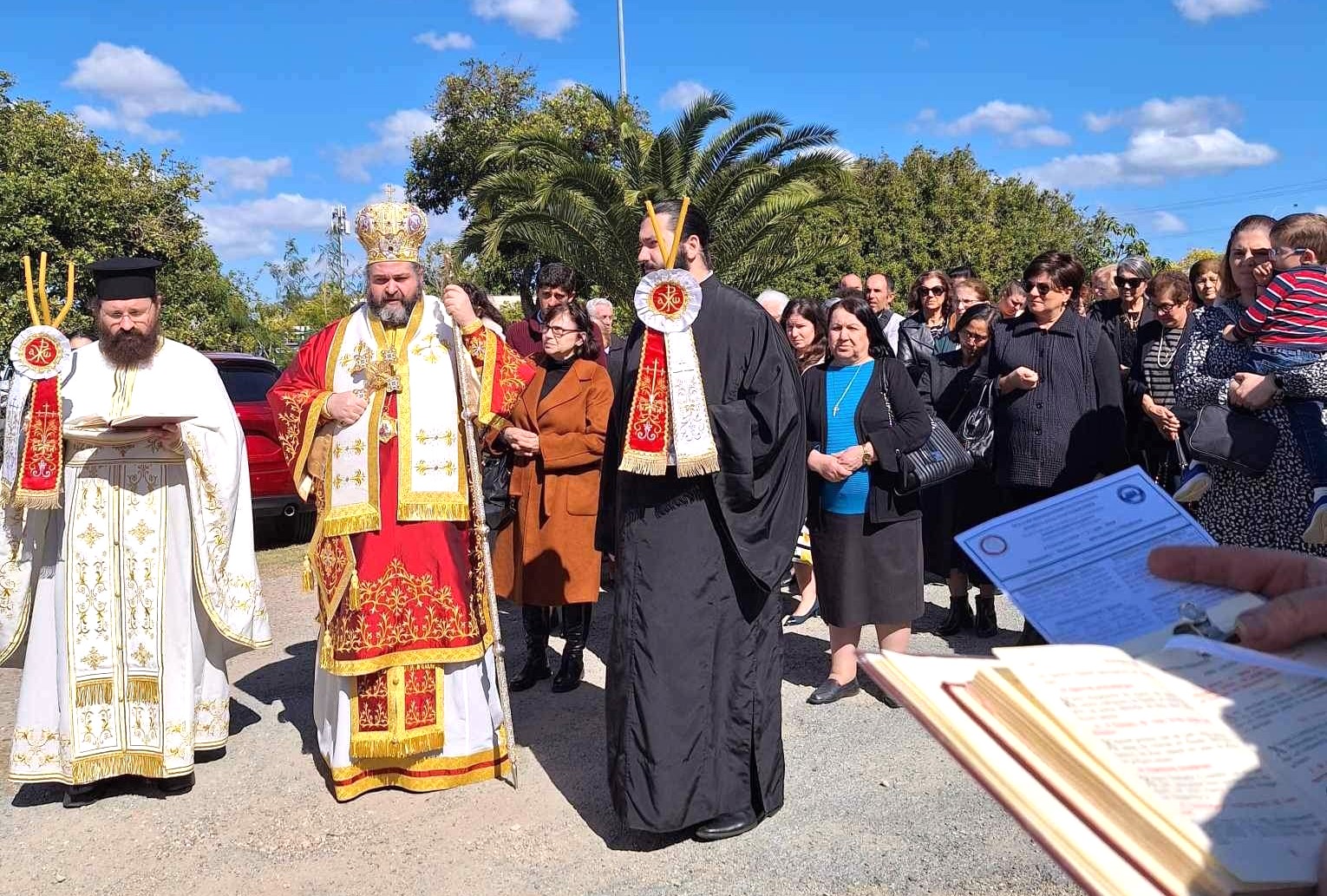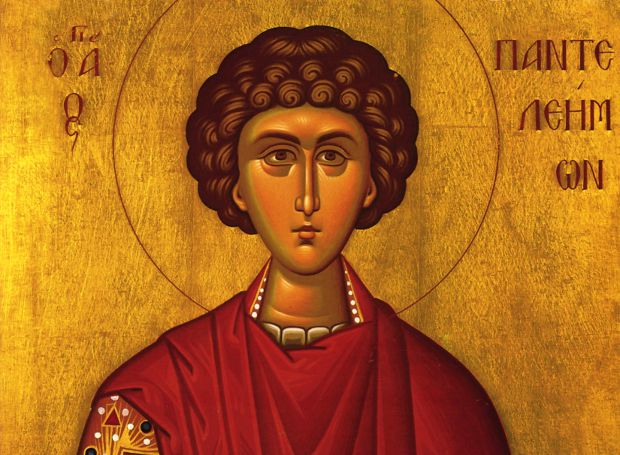42 Martyrs of Ammoria in Phrygia (6 March)


During a war between the Byzantine Emperor Theophilus (829-842) and the Saracens, the Saracens managed to besiege the city of Ammoria (in Galicia in Asia Minor). As a result of treason on the part of the military commander Baditses, Ammoria fell, and forty-two of its generals were taken captive and sent off to Syria.
During the seven years of their imprisonment, their captors tried in vain to persuade them to renounce Christianity and accept Islam. The captives stubbornly resisted all their seductive offers and bravely held out against terrible threats. After many torments that failed to break the spirit of the Christian soldiers, they condemned them to death, hoping to shake the determination of the saints before executing them. The martyrs remained steadfast, saying that the Old Testament Prophets bore witness to Christ, while Mohammed called himself a prophet without any other witnesses to support his claim.
One of the captives, Theodore, had renounced the priestly office to become a general. His captors taunted him, “We know that you forsook the priestly office, became a soldier and shed blood in battle. You can have no hope in Christ, Whom you abandoned voluntarily, so accept Mohammed.” But the martyr replied, “You do not speak truthfully when you say that I abandoned Christ. Moreover, I left the priesthood because of my own unworthiness. Therefore, I must shed my blood for the sake of Christ, so that He might forgive the sins that I have committed against Him.”
The executioners took each one separately and led him off to be beheaded, then threw the bodies into the River Euphrates. In the service to them, these holy passion-bearers are glorified as: the “All-Blessed” Theodore, the “Unconquered” Callistus, the “Valiant” Constantine, the “Wondrous” Theophilus and “the Most Strong” Basoes. Saints Aetius (Aetitus) and Melissenus were also among the martyrs.
The betrayer Baditses did not escape his shameful fate. The enemy knew that it is impossible to trust a traitor, and so they killed him.
These Martyrs, men of high rank in the Roman (Byzantine) army, were taken captive when the city of Amorion in Phrygia fell to the Moslem Arabs in 838, during the reign of Theophilus the Iconoclast. Among them were Aetius and Melissenus, the generals; Theodore, the chief of the imperial ceremonial bodyguard; Craterus, the eunuch; Callistus, Constantine, Bassoes, and Theophilius, who were military officials; and certain others who held important positions. Because of their experience in war and their virtue, the Moslems did not slay them, but tried by all means to convert them to Islam and have them to fight in their own campaigns. They kept the holy Martyrs shut up in a dark dungeon in the city of Samarra in Syria, threatening and abusing them, making promises of glorious rank and magnificent riches, keeping them in hunger, oppression, and darkness, not for a few weeks, or a few months, but for seven full years. Finally, unable to break the courage and faith of their captives, they beheaded them in the year 845.
They were all commanders of the Byzantine Emperor Theophilus. When the Emperor Theophilus lost the battle against the Saracens at the city of Ammoria, the Saracens captured the city and enslaved many Christians. Among them were these commanders. The remaining Christians were either killed or sold into slavery. The commanders were thrown into prison, where they remained for seven years. Many times the Moslem leaders came to them. They counseled and advised the commanders to embrace the Islamic Faith, but the commanders refused to listen. When the Saracens spoke to the commanders, saying, “Mohammed is the true prophet and not Christ,” the commanders asked them: “If there were two men debating about a field and the one said, ‘This field is mine,’ and the other, ‘It is not, it is mine,’ and one of them had many witnesses nearby saying it is his field, and the other had no witnesses, but only himself–whose field would you say was?” The Saracens answered: “Indeed it is his who had many witnesses!” “You have judged correctly,” the commanders answered.


“That is the way it is with Christ and Mohammed. Christ has many witnesses: the Prophets of old, from Moses to John the Forerunner, whom you also recognize and who witness to and about Him, whereas Mohammed witnesses to himself that he is a prophet and hasn’t a single witness.” The Saracens were ashamed and again they tried to defend their faith in this manner: “Our faith is better than the Christian Faith, as is proved by this: God gave us the victory over you and gave us the best land in the world and a kingdom much greater than Christianity.” To this the commanders replied: “If that were so, then the idolatry of the Egyptians, Babylonians, Hellenes, Romans, and the fire-worship of the Persians would be the true faith, for at one time all of these people conquered the others and ruled over them.
It is evident that your victory, power and wealth do not prove the truth of your faith. We know that God, at times, gives victory to Christians and, at other times, allows torture and suffering so as to correct them and to bring them to repentance and purification of their sins.” After seven years they were beheaded, in the year 845 A.D. Their bodies were then thrown into the Euphrates River, but they floated to the other shore, where they were gathered and honorably buried by Christians.
Apolytikion of 42 Martyrs of Amorion
Fourth Tone
Thy Martyrs, O Lord, in their courageous contest for Thee received as the prize the crowns of incorruption and life from Thee, our immortal God. For since they possessed Thy strength, they cast down the tyrants and wholly destroyed the demons’ strengthless presumption. O Christ God, by their prayers, save our souls, since Thou art merciful.
Source: oca.org / goarch.org / westserbdio.org




